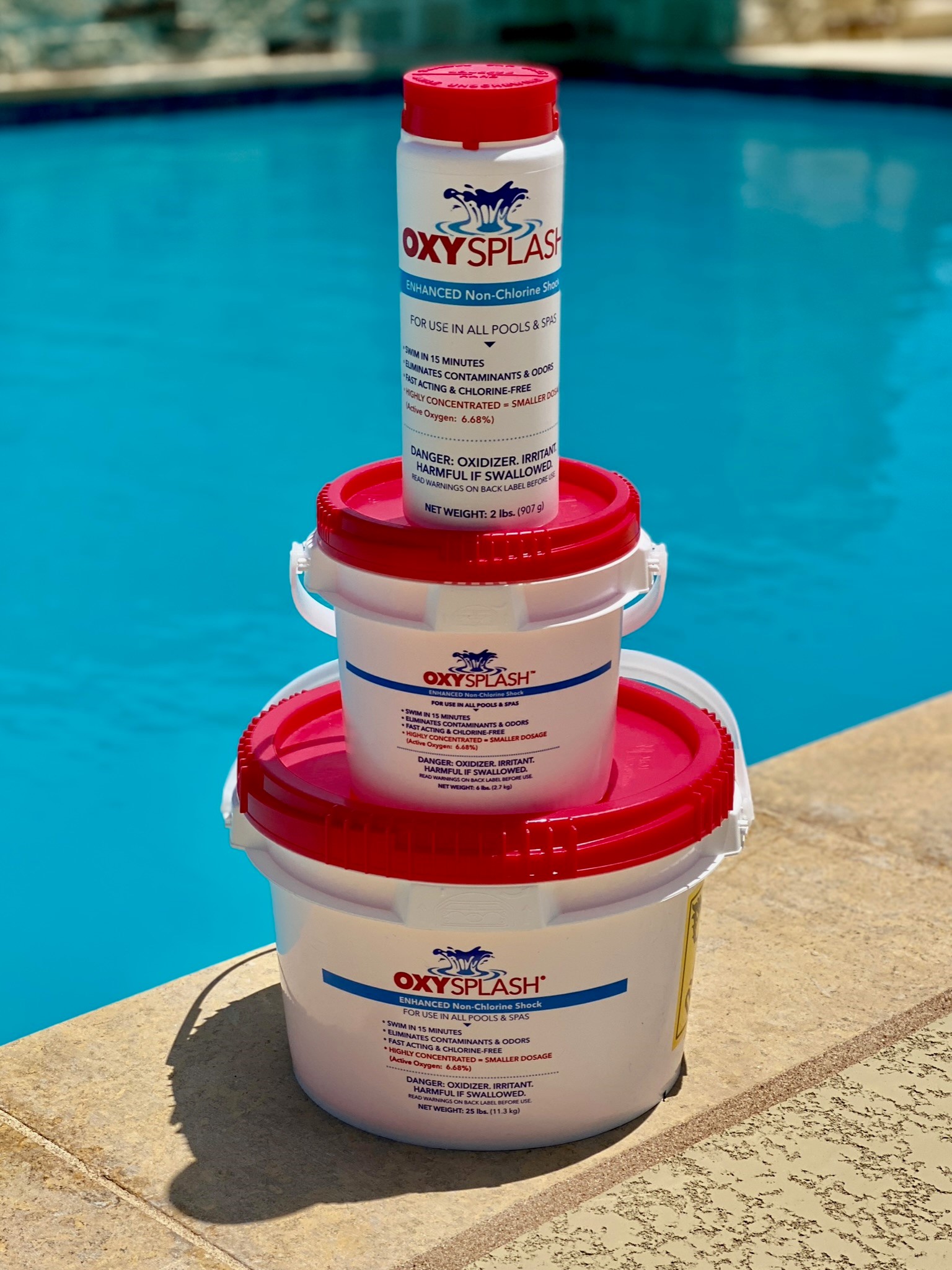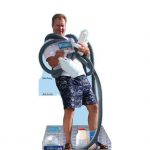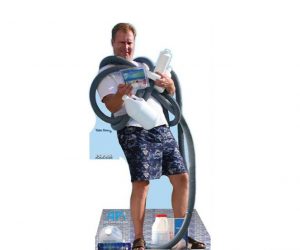Chlorine vs Non-Chlorine Shock



Thus far in this season of Ricks’ Remedies, we have covered pH-The Ruler, Alkalinity-The Soother, and Calcium-The Guardian. In this installment we will introduce, Stabilizer-The Protector. Ready? Let’s go!
Stabilizer (also known as conditioner) is the last necessary component of our pool balance team. Think of it as sunscreen for your chlorine. Stabilizer protects chlorine from sunlight. Without it chlorine dissipates very quickly into the atmosphere.

Both trichlor and dichlor may contain stabilizer as high as 40% by weight. And although stabilizer is necessary, it can also be a deterrent to chlorine’s overall effectiveness causing what is commonly known as a “chlorine lock”. Should you need to reduce the amount of stabilizer in your pool, you would do that by adding more water. With that in mind, it is best to keep stabilizer above 30ppm (parts per million) but no greater that 55ppm. With your pH (The Ruler) at 7.2-7.6, alkalinity (The Soother) at 80-120ppm, calcium (The Guardian) at 250-400ppm and your Stabilizer (The Protector) at 30-55ppm, your pool is in good shape! Stay tuned for our next episode of Rick’s Remedies when we introduce you to Chlorine- “The Cleanser”. Until then, stay safe and enjoy your pool!
Rick’s Rule of thumb: 10oz of stabilizer raises 10,000 gallons of water 10ppm.

Thus far in this season of Ricks’ Remedies, we have covered pH-The Ruler, Alkalinity-The Soother, Calcium-The Guardian, and Stabilizer- The Protector. Now comes the biggie… wait for it….Chlorine- The Cleanser!
There are several misconceptions about chlorine. The most common being, the smell of chlorine coming from your pool means you have too much. The reality is you don’t have enough! What you are actually smelling is something called CHLORAMINES. Chloramines occur when chlorine bonds with contaminates such as sweat, urine or body oils. (ewwww, gross!)

Chloramines, also referred to as Combined Chlorine (CC), have been known to cause issues such as smelly, cloudy water, burning eyes, etc. Because test strips don’t measure combined chlorine, it must be calculated. To calculate CC, we measure Total Chlorine (TC) and Free Chlorine (FC). TC is a measurement of all types of chlorine present in the water and FC is chlorine that has not bonded with contaminates and is available to do the work of sanitizing your pool and keeping it clear and smelling good! To calculate CC, use the formula TC-FC=CC. All measurements are in PPM (parts per million). The recommended level of FC is 1ppm to 3ppm.
EXAMPLE:
Test Strip Reads
So now you’re asking yourself, “what do I do??” You have 3ppm of CC in your pool and the water is smelly and your eyes are burning! The answer is, shock the pool! To do it properly, you must reach BREAK POINT CHLORINATION, which means a chlorine level of ten times the calculated amount of CC is required to rid your pool of those nasty chloramines! In the example above, the industry standard and recommended number is 30ppm. When we achieve this, the pool will sparkle and smell good again!
Pool gallon calculations are not always accurate. With that being said, it is better to error on the high end when adding chlorine to be sure to reach break point. When using calcium hypochlorite shock (CalHypo) 73%, you must use a minimum of 3lbs to raise the chlorine level to 30ppm. Put it all in at once, this is no time to be shy! If enough isn’t used, break point will not be reached, and the problem will be compounded.
Expected results 24hrs after shocking
Other sources of chlorine can be used as well. For recommendations, and dosage instructions, consult your pool store. Join us here again for the next installment of Rick’s Remedies and learn about the various types of chlorine and why we use them. Until then, stay safe and Happy Holidays from our family to yours!
Ricks Rule of Thumb:
1lb of calcium hypochlorite raises 10,000 gallons 10ppm
Next up: Chlorine types and why we use them!

In our previous installment of Rick’s Remedies, we discussed the moody nature of pH (The Ruler) and how alkalinity (The Soother) helps to keep it in check. The third member of your pools water balance team is Calcium- The Guardian.
Water and calcium go together like peas and carrots. In nature, calcium is plentiful and can be found in limestone as well as many other underground sources. However, as with any element taken from nature, there are certain sustaining components of that element that are lacking due to its new environment. This is

the case with your pools water and calcium. If the calcium in your pool falls below the 250-400ppm industry standard range, the water in your pool will begin to aggressively seek what it is lacking. This puts your concrete finish, liner, pipes, and even your filter at risk. The calcium can also act as a buffer for pH, along with the alkalinity, so when your calcium is low the pH may fluctuate more often. If the pH is low, as the water seeks calcium it will attack the concrete in your pool leaving you with a pitted finish. If the pH is high, a scale will form which produces a white, chalky waterline or barnacle like formations on your pool walls.
This is why we refer to calcium as “The Guardian”. It works alongside pH (The Ruler) and alkalinity (The Soother) guarding your pools equipment and finish. It also gives the water a sparkle due to its reflective property. This is an important aspect of maintaining a well-balanced pool and cannot be overlooked in a weekly pool maintenance regimen. So, remember, keep your pH between 7.2-7.6, your alkalinity between 80-120ppm and your calcium at 250-400ppm. Stay tuned for our next installment of Rick’s Remedies where we will discuss Stabilizer- “The Protector”. Until then, stay safe and enjoy your pool!
Ricks Rule of Thumb:
1lb of calcium chloride (CaCl2) raises 10,000 gallons of water 10ppm.